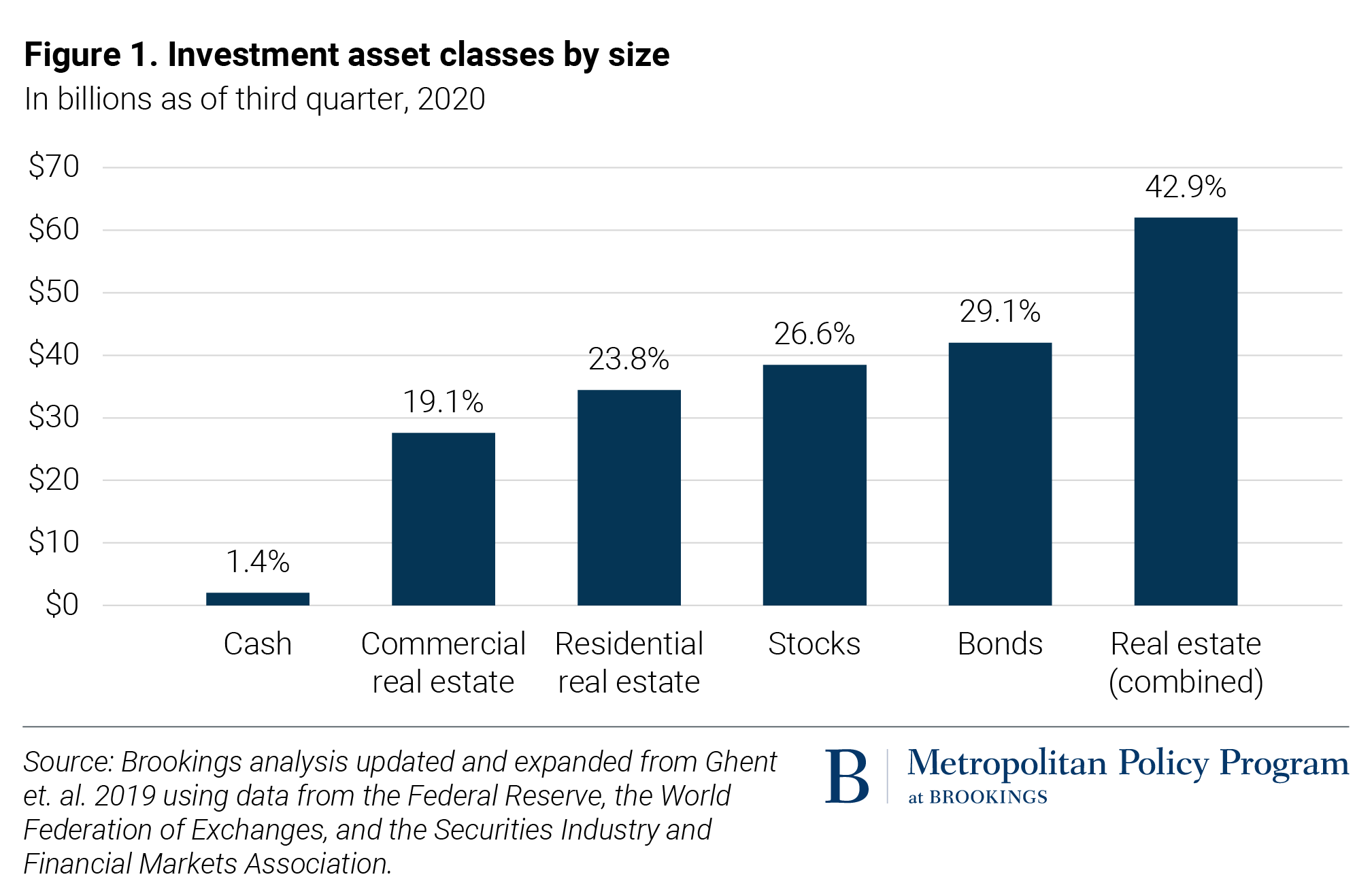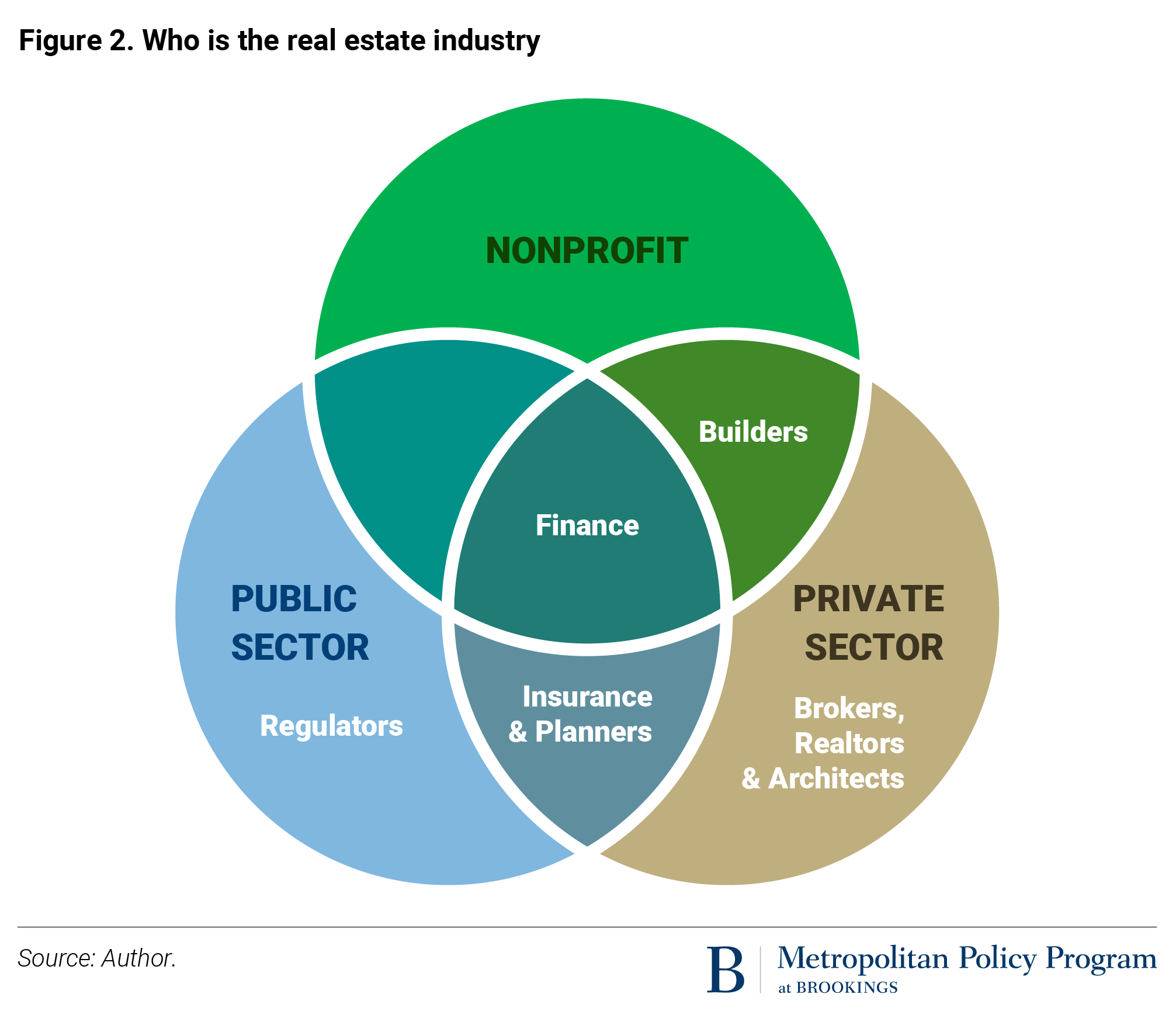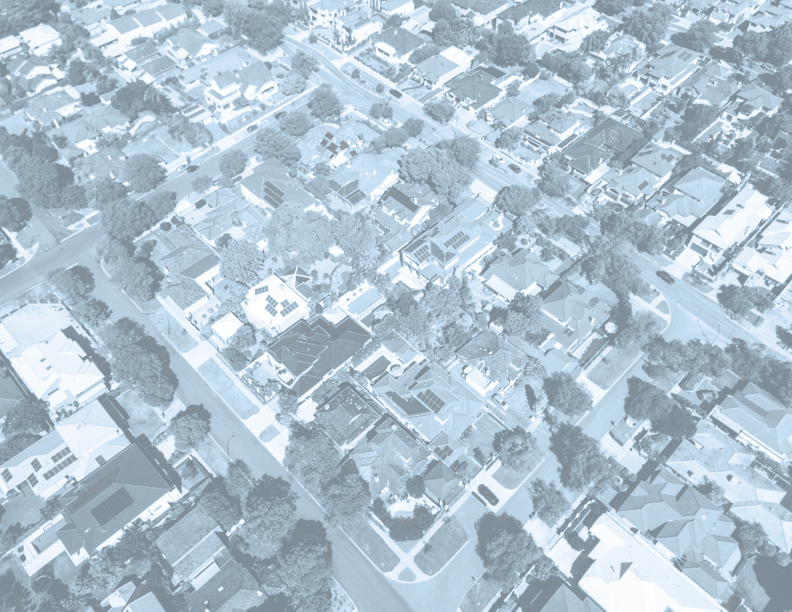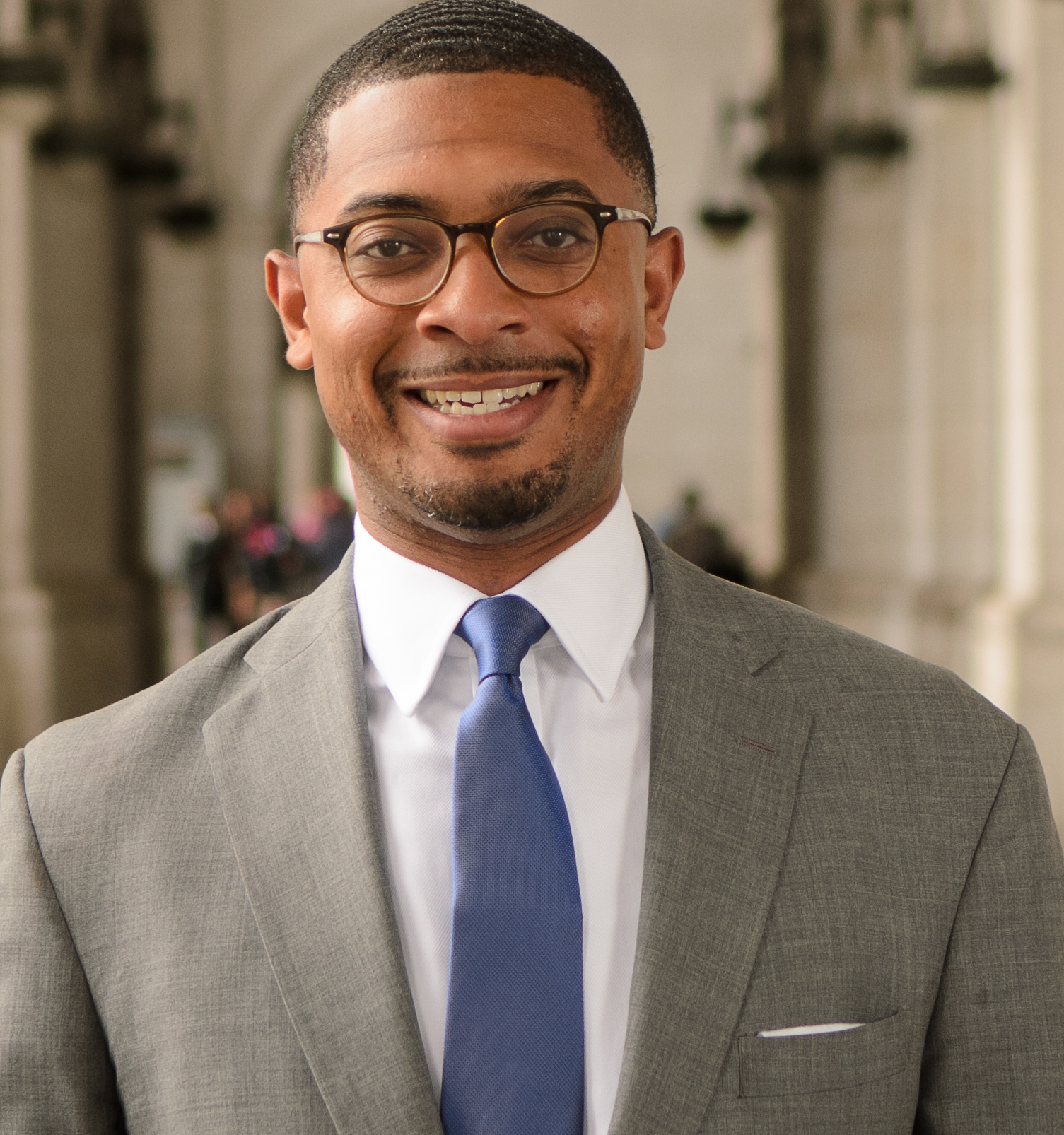Editor’s Note: For more info on content related to Community Ownership of Real Estate, please visit our page here.
Real estate plays a defining role in the American economy. It is by far the largest asset class in the United States, comprising over 40% of private assets nationally, followed by bonds, stocks, and cash (Figure 1). But we invest—and reap—far more than wealth from what we build. Our built environment is an expression of health, innovation, community, and culture. It is a physical reflection and embodiment of the human experience, its values, and its aspirations—and the ways they have evolved over time, for better and for worse.

Real estate is cyclical. Industry players are accustomed to periodic market resets, where credit tightens, demand is weak, and the construction sector sheds jobs. During these “resets,” some combination of time, bailouts, and corporate pivots ushers in the next cycle of growth. The current cycle began with a reset triggered by the subprime mortgage lending crisis and subsequent Great Recession of 2007 to 2009. Today, the industry is overdue for its next reset—but this one is different.
For generations, the presumptive American real estate consumer has been a middle-class white family—a fact that is reflected in the products, pricing, planning, and public policies that form the baseline of industry practice. But today, five converging trends are disrupting this market fundamental: persistent segregation by race and income, the demographic transformation of America, destabilized regional housing markets, the future of work, and disruptions to the retail ecosystem. Thus far, the real estate industry has only responded at the margins to these trends. If we continue “business as usual,” the real estate industry risks not only another market crash, but also becoming a central contributor to the deterioration of American political and social cohesion.
The American real estate industry can create communities of opportunity—or face a future both figuratively and literally underwater
The intersecting crises of 2020—the COVID-19 pandemic, subsequent economic recession, racist police brutality, and climate-induced catastrophe—are exposing and accelerating economic and fiscal fragility, environmental vulnerability, and deep inequities that have been mounting for decades. These crises were born in no minor part out of land use and investment patterns—heavily influenced by discriminatory policies, industry practice, and toxic cultural attitudes—which prioritized profits over stewardship of the asset class that comprises the building blocks of our economy and society.
Yet these crises are occurring at a time when the demand for communities that are more prosperous, resilient, and equitable is on the rise. For years, anger over persistent racial and economic segregation and disinvestment, demographic shifts, and changes in where and how we work and shop have been shifting both needs and preferences for housing, retail, and office space—not only in terms of what gets built, but also where and how buildings cluster and connect with one another in place.
But despite mounting signs and evidence, the real estate industry—from local developers to Wall Street financiers—has remained structurally unprepared to meet this demand. Instead, the industry has remained deeply entrenched in or beholden to financial, legal, and professional institutional frameworks that pick winners and losers—to the detriment of the greater American society. This, in turn, has left too many communities one Hurricane Katrina (climate crisis) or one global pandemic (COVID-19) away from economic disruption and fiscal deterioration, hampering their collective ability to fully recover and making them all the more vulnerable to future calamities.
All this provides both an imperative and an opportunity for the real estate industry—supported by policymakers—to reimagine our built environment and reset current policy and practice toward that vision. To this end, these leaders must recognize the need to create more “communities of opportunity”—with full appreciation of the fiscal, social, and environmental benefits that doing so will yield for cities and regions. More than that, they need to embrace their role and responsibility in shaping that future.

WHAT ARE “COMMUNITIES OF OPPORTUNITY”?
“Opportunity Communities” are a model developed by the Kirwan Institute at the Ohio State University, which have been mapped in multiple U.S. regions through a partnership with Department of Housing and Urban Development’s (HUD) Sustainable Communities Initiative under the Obama administration. The model is holistic and flexible to local values regarding what matters most and how to measure what makes a neighborhood a great place to live, but the core concept is that communities of opportunity are places that have decent housing that most people can afford; have proximity to jobs; are multimodal, meaning walkable and transit-accessible; have quality public schools; and are healthy and resilient, with green space, access to food, and manageable disaster vulnerability.
The Great Real Estate Reset initiative
This initiative presents and describes the major forces that have pushed the industry toward this moment, and then will seek to articulate the practices and policies the industry and the public sector must adopt in order to successfully meet it.
We begin by describing five sets of structural market trends, and why they matter to our collective ability to create more prosperous, equitable, and resilient communities of opportunity. We will then kick off a collaborative effort to develop a “Real Estate Reset” playbook with partners inside and outside the industry, featuring a yearlong multimedia series that will articulate specific, actionable ideas for policy and practice reform.
The goal of this joint Brookings-LOCUS initiative is to facilitate a more transparent and inclusive conversation in real estate that goes beyond talking to each other behind tiers of member-only paywalls. Through these discussions, it is our hope to present a new vision for industry practice that looks further than short-term gains or what’s hot for the next quarter, and instead sets in motion a systemic transformation of the real estate ecosystem—one based on care and common sense consideration of our assets to nurture better outcomes for more people and places.
The authors thank Alan Berube, Joe Cortright, and Calvin Gladney for their excellent review and advice in shaping this series, and Christopher B. Leinberger for his inspiration.




